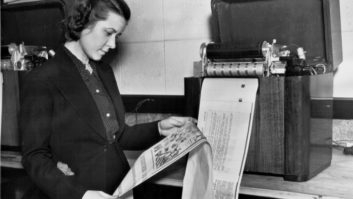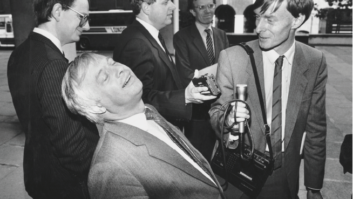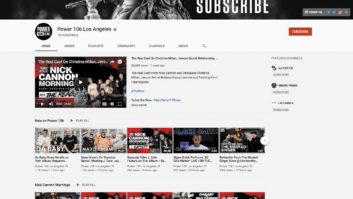NEW YORK As Internet video becomes more popular and a standard marketing, branding and communication tool, traditional TV broadcasters find themselves moving from the television screen to the computer screen. The same holds true for radio.
The growth of Internet radio has sparked a desire to stream not only audio from radio stations, but video content as well. More and more stations are installing television production equipment into their studios to broadcast their morning shows not just to car or Internet radios, but to flat-screen computer monitors in cubicles and offices all over the country.

Roberto Boschian operates a NewTek TriCaster system for WYCD(FM) in Detroit. Many considerations
However, a radio station considering streaming a morning show or any content using video must consider a couple of things.
While it would seem obvious that the medium of radio and television are different, you’d be surprised that it is often overlooked. You just can’t throw a broadcaster who’s been doing radio for 30 years on camera and expect to get a great “TV” product. Talent has to be conscious of the fact that the audience can see them now, so they have to pay attention to their appearance, dress and overall mannerisms when they’re on camera.
Second, because most radio stations are designed for talking, they make terrible sets for video production. This means that camera placement or positioning usually is bad. In most of the studios I’ve visited, it was difficult to pull off a multi-camera shoot without getting another cameraman in the shot. In a tight space, usually one cameraman will do the trick, but to produce a quality morning show you’ll need a bit more.
What I’ve found to work well are stationary cameras that a producer can control remotely like the Sony EVI-D100. Canon and Panasonic also make small SD (standard-definition) and HD (high-definition) PTZ (pan-tilt-zoom) remote cameras that can be mounted on walls, ceilings or a desk. Each camera usually requires a 12 V power source and many can be daisy-chained using VISCA control cable, which sends the pan, tilt and zoom commands to each camera.
The next issue for radio stations to consider for video production is lighting. This is the most important aspect of video production, and poor lighting will make your video look amateurish and unprofessional.

A video-oriented setup can look different than a typical radio studio. Since all Internet video gets compressed during transmission, video camcorders need a lot of light to produce an image that will retain its quality through the compression and streaming process. Depending on the set, track lighting using cool fluorescent bulbs made for video production is an ideal option, otherwise a decent light kit from an experienced lighting equipment manufacturer such as Lowell will do the trick.
The most important consideration is bringing these components together to deliver a final product is a live watchable stream or Webcast online. After evaluating different options, from using laptops with prosumer cameras or high-end broadcast switchers, I found a product from video equipment maker NewTek called the TriCaster.
This is a television studio in a small, affordable box that allows radio stations to produce network-style television (switch multiple cameras, insert graphics, titles, use virtual 3D sets, etc.) that can be broadcast, streamed or projected simultaneously. In addition, the TriCaster’s form factor makes it portable, so a station can take it on the road to broadcast from a remote, cover annual music festivals, concerts, sporting events and so forth. The system is a past winner of Radio World’s “Cool Stuff” Award, in fact.
As digital media and Internet video continues to grow, more radio stations will stream live video to their audience. As the audience grows, so will the number of advertisers and revenue, enhancing not just the bottom line for the broadcasters, but the experience for the viewers who can watch or listen to their favorite disc jockeys and artist from anywhere an Internet connection is available.
Markell Lambright is a project manager for CBS Radio in the Digital Media Group; he manages the implementation of audio and video streaming projects for 134 radio stations.
Radio World welcomes your tech tips and story ideas. Write to[email protected].












